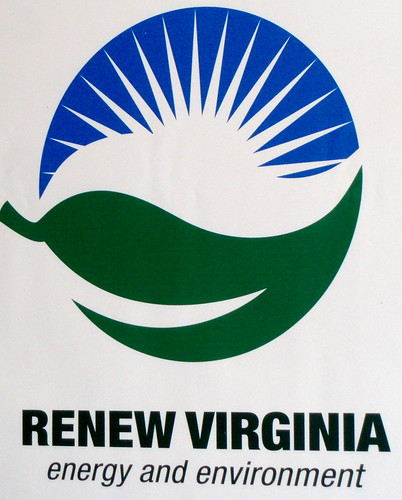
Cross-Posted from: HERE
Part 2
This is my second post in a 3 part series about what role natural gas can play in a low carbon sustainable future, and what role it should play. Part 1 is right here. This post is going to explore the reasoning against and for natural gas use.
I will cover the environmental/social justice, carbon emissions, and national security arguments surrounding natural gas.
Environmental/Social Justice/Carbon Emissions: So it turns out, natural gas drilling is exempt from clean water laws. Thank you Vice President Cheney. Apparently natural gas companies do not have to disclose the chemicals they are using in a drilling process known as hydraulic fracturing, where millions of gallons of water, sand, and chemicals are injected at a very high pressure down and across into horizontally drilled wells. This causes the rock layer underground such as shale to crack, and the natural gas from the shale flows up from the well since the sand particles injected hold open the fissures. Hey, I wonder what happens to the chemicals? Apparently gas drilling has degraded water in hundreds of wells in Colorado alone. Ohio had it’s own report on contmination problems from the drilling of natural gas. Another fear from drilling and the pipelines that carry the gas is of an explosion. In fact, Ohio has it’s own report of a drilling related explosion. Here is how Pro Publica described it…
“A spark ignited the natural gas that had collected in the basement of Richard and Thelma Payne’s suburban Cleveland home, shattering windows, blowing doors 20 feet from their hinges and igniting a small fire in a violent flash. The Paynes were jolted out of bed, and their house lifted clear off the ground. Fearing another explosion, firefighters evacuated 19 homes in the small town of Bainbridge. Somehow, gas had seeped into the drinking water aquifer and then migrated up through the plumbing.”
For a good graph of all the natural gas accidents that have occurred state by state, check here.
What’s the counter-argument? Well, if you’re the Natural Gas Industry, you would point to the regulations natural gas does have. But who trusts the suppliers to tell you that natural gas is clean? The above information clearly shows it’s not clean. The legitimate argument you would get from the part of the environmental community that is pro-natural gas(or apathetic about natural gas), would be to compare the extraction process of natural gas to oil drilling, or to how we extract and store our coal. I know many could consider the effects of mountaintop removal to be worse. The implications of oil spills are also pretty daunting. Coal slurry dam disasters can be absolutely devastating. The counter-argument regarding extraction would be that compared to coal mining and oil drilling, natural gas extraction is the lesser of the evils.
What about emissions? This again depends what you’re comparing the natural gas to. I would consider this a valid source, since although it’s on the natural gas industry’s page, the source they’re taking this emissions profile from is the Energy Information Administration(EIA). It’s also along the lines of what I’ve read from both pro and anti natural gas sources.
Fossil Fuel Emission Levels
– Pounds per Billion Btu of Energy Input |
| Pollutant |
Natural Gas |
Oil |
Coal |
| Carbon Dioxide |
117,000 |
164,000 |
208,000 |
| Carbon Monoxide |
40 |
33 |
208 |
| Nitrogen Oxides |
92 |
448 |
457 |
| Sulfur Dioxide |
1 |
1,122 |
2,591 |
| Particulates |
7 |
84 |
2,744 |
| Mercury |
0.000 |
0.007 |
0.016 |
| Source: EIA – Natural Gas Issues and Trends 1998 |
As you can see natural gas has about 56-57% of the CO2 emissions of coal, and 71% of oil. Carbon Monoxide is comparable to oil, and far less than coal. Nitrogen Oxide is another greenhouse gas, and is far less concentrated in natural gas than coal and oil. When it comes to sulfur dioxide, particulate matter, and mercury, natural gas is far cleaner. So this is how one could look at the glass half-full for natural gas. On the other hand, with greenhouse emissions that at best are 50% of coal(which is extremely dirty), I wouldn’t exactly call natural gas a clean fuel. The issue we run into again though is that in a country that’s nearly 50% dependent on coal, we could have a World War 2 style effort to produce clean renewable energy, and it would still take a considerable amount of time to displace the coal. The same goes for coal intensive developing countries such as China and India. Time we don’t have. The argument can be made, and it has been made, that while we’re adding renewables to the mix, we need to also increase our use of natural gas in order to displace coal so that we can more dramatically reduce emissions. In fact, there is considerable evidence that Britain is going to double it’s Kyoto targets, and achieve a 23% reduction below 1990 levels by 2012 in emissions, largely because it switched to natural gas from coal. Of course there were measures to increase usage of renewables and to have a smarter transportation system, but natural gas was a significant factor in this achievement.
The LNG Exception? One big outlier in all of this emissions data is the additional environmental damage and life-cycle pollution of Liquefied Natural Gas(LNG). Here, natural gas is frozen to -260 degrees to become a liquid, and then shipped on giant tankers, often halfway around the world to countries that use it. This is what we import. According to a study by the Carnegie Mellon Institute, when you take into account the full life-cycle of carbon dioxide emissions of coal versus LNG, their total CO2 emissions are “comparable”. I quote that since I want to add context and say that according to their findings, LNG has 89% of the carbon dioxide of coal, although that isn’t mentioned, so you’ve got to pull out a handy calculator. It’s also worth noting that this is only taking into account carbon dioxide emissions, and not nitrogen oxide emissions, which is also a greenhouse gas. If you note the chart above, you’ll see that if you take NO2 into account for the full life-cycle, the greenhouse emissions comparison of the life-cycles of LNG and coal won’t be quite as close. The important thing to take away from this information on LNG is that it’s considerably dirtier than ordinary natural gas, and can approach the pollution of coal. Whether or not you call them “comparable” depends on your criteria. Coal is still dirtier, but not by as much as it was before we accounted for LNG. When it comes to transportation, the US Department of Energy says LNG that’s used for our transportation needs doesn’t save energy use or greenhouse gas emissions.
Energy Independence!(or not?) One of the things that natural gas advocates say is that that the US has large supplies of natural gas, and that we can use natural gas to help us become energy independent by using it in our cars. It’s very interesting then to note a natural gas analysis all the way out to 2030 by the Energy Information Administration. Two very telling charts are on page 8, which show natural gas supplies by region in the world, and by country in 2008. Let me rank them by region. In order of trillion cubic feet we’ve got the Middle East with 2549, Eurasia with 2020, Africa with 490, Asia with 415, North America with 283, Central and South America with 262, and Europe with 167. The other chart shows the US currently has 3.4% of the world’s natural gas reserves. That should sound familiar to our current oil dilemma. Additionally, if you look at natural gas production over the last 30 years, you’ll see that even as our demand has increased, our production levels have remained the same. Compare that with what’s a steady increase in our natural gas imports, and take a look at who we’re getting those imports from. Then glance back up at which regions of the world have most of the remaining supplies.
This information leads to one conclusion regarding our national security. If we dramatically increase US natural gas consumption(and even if it only holds steady), we’re inevitably going to be importing more and more of our natural gas each year from the countries around the world that we’re trying to become energy independent from when it comes to oil. Additionally, this imported gas would be in the form of LNG, which means it would be more polluting than the dry domestic natural gas. This raises 2 concerns. The first is that on our current course, we’re going to have the same dependency problems with natural gas with currently have with oil. The second is that the idea of replacing coal with natural gas to reduce greenhouse gas emissions sounds good, until you’re importing LNG and the amount of greenhouse gas emissions you’ve cut is far less than anticipated or desired.
So, to sum up what this part 2 analysis has brought to light…
Extraction/Social Justice? At worst drilling for natural gas is just as bad as coal and oil. At best, it’s dirty and can harm communities, but not as dirty as coal or oil, and won’t cause as much harm to communities as coal.
Carbon Emissions? Natural gas is 56% as carbon intensive as coal, 71% of oil, and has less emissions in other important areas as well such as NO2, sulfur, and mercury. However, when you bring LNG into the equation and calculate for lifecycle emissions, you’re no better than oil for transportation, and marginally better than coal for baseload power.
International Security? US natural gas production is reaching its limits, our imports are increasing as our demand goes up, and the parts of the world which have the natural gas do not like us. This means increased use of natural gas will not solve our energy independence problem.
Stay tuned for my verdict on the role of natural gas, what it will be, and what it should be, in PART 3.






 Hilary here, blogging live from the Rayburn House Office building, room 2322, where 18 young people have been waiting in line for the Hearing on Allocations since 5:45am. Dedicated young voters are rallying to attend today’s hearing on ACESA, demanding 100% auction of pollution credits, not free permits for polluters. We are making t-shirts, so that our message of “Free Allocations Hurt Future Generations” and “100% AUCTION” is clear. Some students are having a Bake Sale to raise money to buy off a politician- since apparently that is the only way to get language in federal legislation. Peebles wil be updating the blog as the morning progresses- and you can follow #powershift09 on twitter for hearing updates!
Hilary here, blogging live from the Rayburn House Office building, room 2322, where 18 young people have been waiting in line for the Hearing on Allocations since 5:45am. Dedicated young voters are rallying to attend today’s hearing on ACESA, demanding 100% auction of pollution credits, not free permits for polluters. We are making t-shirts, so that our message of “Free Allocations Hurt Future Generations” and “100% AUCTION” is clear. Some students are having a Bake Sale to raise money to buy off a politician- since apparently that is the only way to get language in federal legislation. Peebles wil be updating the blog as the morning progresses- and you can follow #powershift09 on twitter for hearing updates! 9:00 A.M.
9:00 A.M. 


